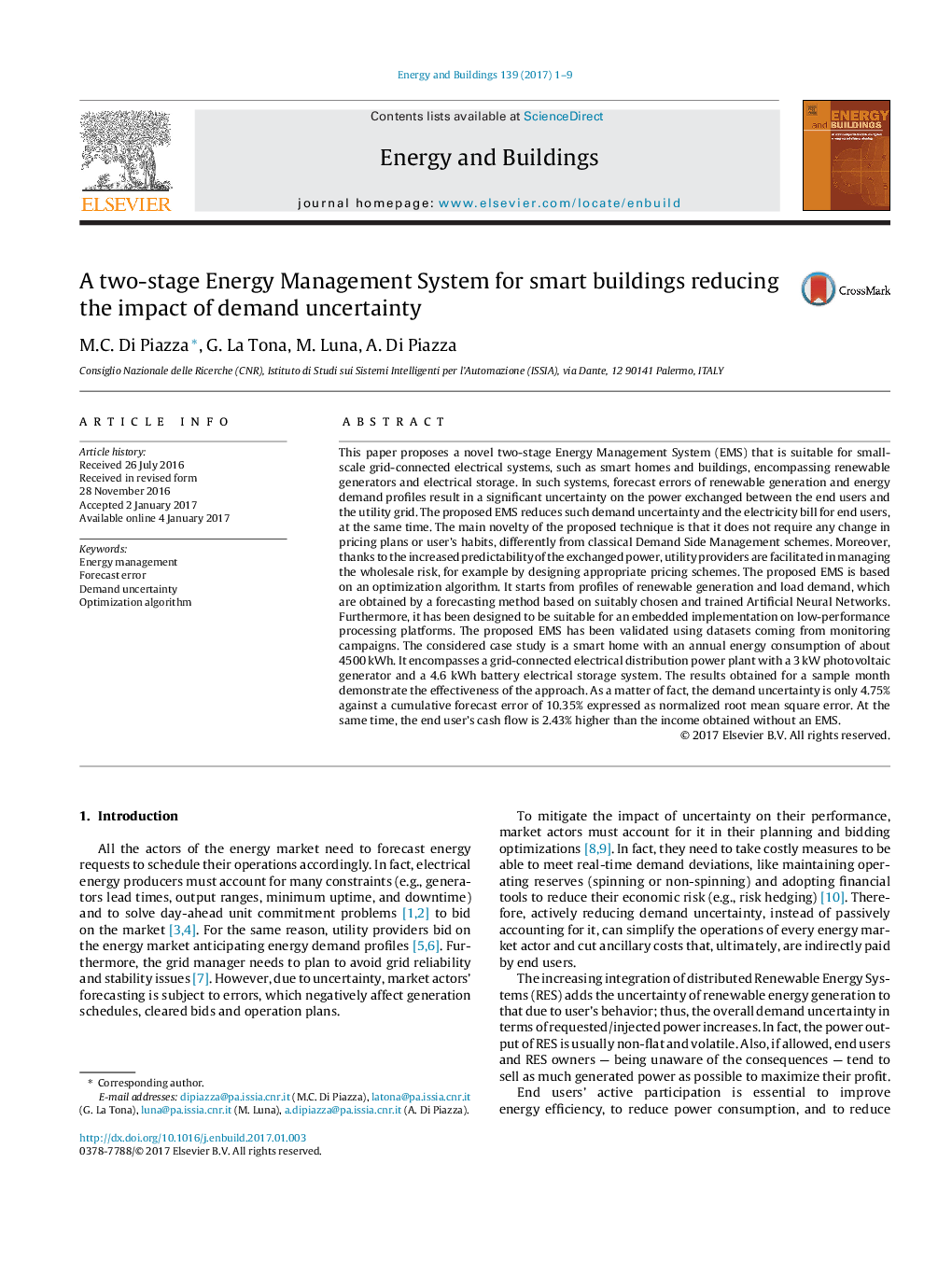| کد مقاله | کد نشریه | سال انتشار | مقاله انگلیسی | نسخه تمام متن |
|---|---|---|---|---|
| 4919298 | 1428951 | 2017 | 9 صفحه PDF | دانلود رایگان |
عنوان انگلیسی مقاله ISI
A two-stage Energy Management System for smart buildings reducing the impact of demand uncertainty
ترجمه فارسی عنوان
یک سیستم مدیریت انرژی دو مرحله ای برای ساختمان های هوشمند که تاثیر عدم قطعیت تقاضا را کاهش می دهد
دانلود مقاله + سفارش ترجمه
دانلود مقاله ISI انگلیسی
رایگان برای ایرانیان
کلمات کلیدی
مدیریت انرژی، خطای پیش بینی، عدم قطعیت تقاضا، الگوریتم بهینه سازی،
موضوعات مرتبط
مهندسی و علوم پایه
مهندسی انرژی
انرژی های تجدید پذیر، توسعه پایدار و محیط زیست
چکیده انگلیسی
This paper proposes a novel two-stage Energy Management System (EMS) that is suitable for small-scale grid-connected electrical systems, such as smart homes and buildings, encompassing renewable generators and electrical storage. In such systems, forecast errors of renewable generation and energy demand profiles result in a significant uncertainty on the power exchanged between the end users and the utility grid. The proposed EMS reduces such demand uncertainty and the electricity bill for end users, at the same time. The main novelty of the proposed technique is that it does not require any change in pricing plans or user's habits, differently from classical Demand Side Management schemes. Moreover, thanks to the increased predictability of the exchanged power, utility providers are facilitated in managing the wholesale risk, for example by designing appropriate pricing schemes. The proposed EMS is based on an optimization algorithm. It starts from profiles of renewable generation and load demand, which are obtained by a forecasting method based on suitably chosen and trained Artificial Neural Networks. Furthermore, it has been designed to be suitable for an embedded implementation on low-performance processing platforms. The proposed EMS has been validated using datasets coming from monitoring campaigns. The considered case study is a smart home with an annual energy consumption of about 4500Â kWh. It encompasses a grid-connected electrical distribution power plant with a 3Â kW photovoltaic generator and a 4.6 kWh battery electrical storage system. The results obtained for a sample month demonstrate the effectiveness of the approach. As a matter of fact, the demand uncertainty is only 4.75% against a cumulative forecast error of 10.35% expressed as normalized root mean square error. At the same time, the end user's cash flow is 2.43% higher than the income obtained without an EMS.
ناشر
Database: Elsevier - ScienceDirect (ساینس دایرکت)
Journal: Energy and Buildings - Volume 139, 15 March 2017, Pages 1-9
Journal: Energy and Buildings - Volume 139, 15 March 2017, Pages 1-9
نویسندگان
M.C. Di Piazza, G. La Tona, M. Luna, A. Di Piazza,
